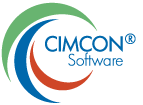Got LIBOR?
The London Interbank Offered Rate – commonly known as LIBOR – will expire by December 31, 2021. The move is the result of major manipulation scandals and reduced trading based on the rate, which is linked to everything from credit cards to leveraged loans. Libor is deeply embedded in financial markets. Some $200 trillion of derivatives are tied to the U.S. dollar benchmark alone and most major global banks will spend more than $100 million this year preparing for the switch.
Global regulators have made a concerted effort to wind down the benchmark in 2021, with the Federal Reserve and others pushing market participants toward other alternatives. The Fed is intensifying its scrutiny of banks’ efforts to shed their reliance on Libor, and has begun compiling more detailed evidence on their progress, stating that “In the months ahead, supervisors will focus on ensuring that firms are managing the remaining transition risks.” The likely replacement in the United States is the Secured Overnight Financing Rate (SOFR).
The Bank of England will hold executives to account for progress in the transition under the U.K.’s regulatory regime for senior managers stating that was now the “final chapter” and that “there is no excuse for delays”. If firms fail to take appropriate steps, there is the potential for measures such as capital sanctions.
While enterprise systems that use LIBOR can be transitioned in a planned and orderly manner, what about the thousands of spreadsheets and other end user computing (EUCs) applications such as Python, R and Access databases that end-users rely on every day? These could easy slip through the cracks. CIMCON’s EUC Insight Discovery software is already helping customers search for spreadsheets and other EUCs that use the LIBOR rate, by scanning their network folders and other repositories where these EUCs reside. EUC Insight Discovery scans these locations, identifies files that use LIBOR, and automatically prioritizes them based on their use date, materiality, complexity and several other attributes that can be configured by each client to suit their needs. An enterprise EUC map shows the lineage of all files with their data sources.
Once the files have been identified, CIMCON’s XLAudit tool can help you take a deep dive into the critical high priority files and remediate them. The exact cells where the rate is being used can be identified, and then fixed.
Further, an inventory of such EUCs can be maintained using the Inventory Module, and then actively monitored using Change Management with automated alerts to ensure that the Libor rate or other errors/changes do not get inadvertently re-introduced into the EUC.
In a constantly changing regulatory landscape, automation is the key to stay ahead of regulations, reduce costs and stay compliant. Saving you weeks/months of manual labor, CIMCON’s EUC Insight software can fill an important need and become one component of your automation initiatives.



